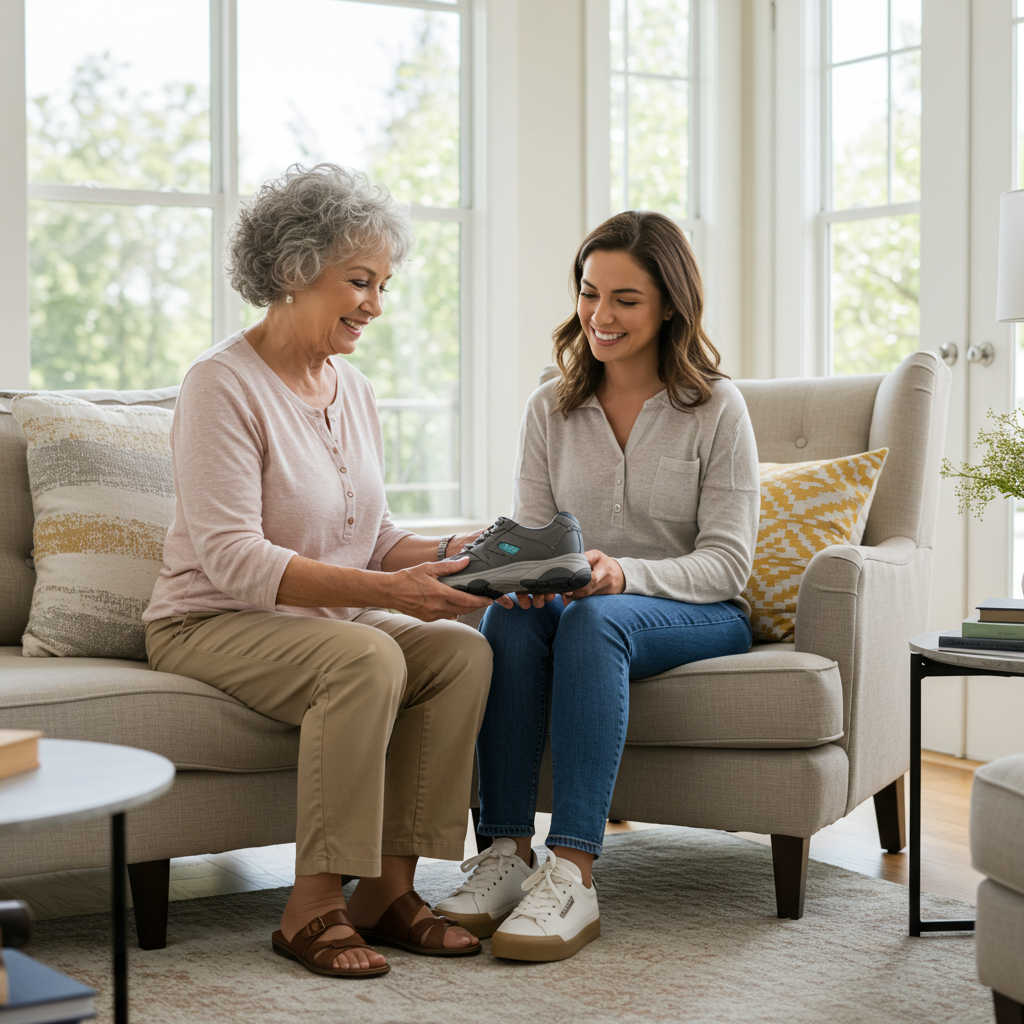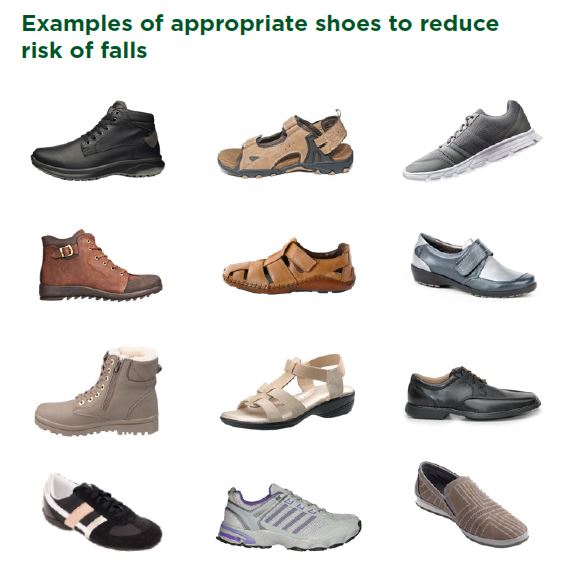For You : From Mobile Rehab Physical Therapy
Step Safely: A Guide to Choosing the Right Shoes to Prevent Falls

Falls pose a significant risk to older adults, often leading to limited mobility and a decline in independence. However, the right footwear can play a crucial role in preventing these incidents. This guide will walk you through what to look for—and what to avoid—when choosing shoes to maximize safety and support.
Understanding the Connection Between Foot Health and Falls
Several foot-related issues can increase the risk of falling:
Increased foot pain can disrupt your gait and balance.
Reduced flexibility in the ankle joint can limit your range of motion and stability.
Reduced calf muscle strength can make it harder to rise up and maintain balance.
Neuropathy (nerve damage) can lead to reduced sensation in the feet, affecting your awareness of the ground.
Foot deformities like bunions or hammertoes can alter your gait and stability.
Taking care of your feet and choosing appropriate footwear are essential steps in fall prevention.
What to Look for in a Safe Shoe
When selecting shoes, prioritize these safety features:
Laces or Straps: These ensure the shoe stays securely on your foot while walking.
Firm Collar Heel: This feature provides stability and prevents the heel from slipping.
Beveled Heel: This design detail helps prevent catching the heel and causing a slip.
Thin, Firm Midsole: This allows you to feel the ground beneath your feet, enhancing balance and stability.
Textured Sole: A textured sole provides traction and prevents slipping.
Broad, Flared Heel: This maximizes contact with the ground and adds to stability.
Shoes to Avoid
Certain types of shoes can compromise your safety and increase your risk of falling:
Soft or Stretched Uppers: These allow the foot to slide within the shoe, reducing stability.
Shoes Without Laces: These can allow the foot to slide out, leading to a fall.
Slippery or Worn Soles: These lack traction and are particularly hazardous in wet conditions.
High Heels: Heels over one inch, especially narrow ones, can compromise balance and increase the risk of falls.
Shoes with No Back or Strappy Backs: Shoes like mules, clogs, or slingbacks don’t provide adequate support.
Additional Footwear Tips
Wear shoes inside and outside: Avoid walking in socks alone.
Shop for shoes later in the day: Your feet tend to swell throughout the day, so this will help ensure a comfortable fit.
Have your feet measured: This will help you determine the correct shoe width and length.
Choose shoes with a wide toe box: This accommodates foot deformities like bunions or hammertoes.
Consider consulting a pedorthist: These specialists can provide footwear and orthotic recommendations for optimal support.
Taking Care of Your Feet
In addition to choosing the right shoes, proper foot care is essential:
Regular Check-ups: Have your healthcare provider or a podiatrist check your feet regularly.
Annual Foot Exam: Ask your healthcare provider to check your feet at least once a year.
Podiatrist Consultation: See a podiatrist for any foot problems like pain or deformities.
Physical Therapy: Work with a physical therapist on exercises to improve foot and ankle strength and flexibility.
By combining proper foot care with safe footwear choices, older adults can significantly reduce their risk of falls and maintain an active, independent lifestyle.

